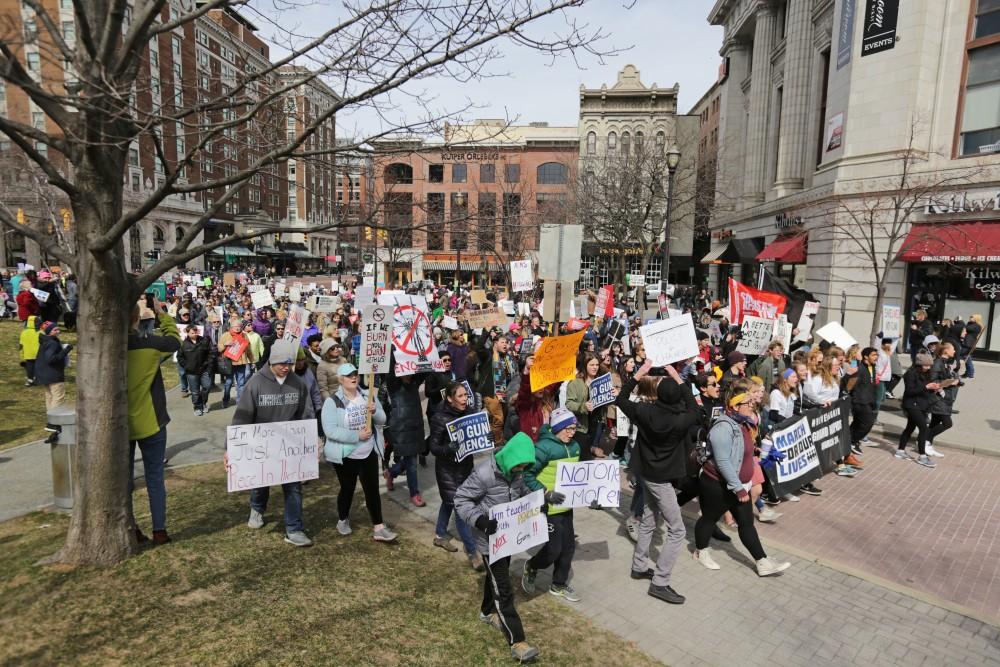1 in 5 Americans has participated in protests since 2016, study finds

GVL / Emily Frye Student leaders from Forest Hills Northern High School direct the March For Our Lives protest in Grand Rapids, MI on Saturday March 24, 2018.
Apr 12, 2018
Since 2016, numerous protests and marches have taken place across the country, many of them dealing with issues viewed as being related to President Donald Trump. But just how many Americans are actually protesting, and what do these modern movements look like compared with the protests of 50 years ago? Recently, The Washington Post put out an article detailing a study on this topic.
According to a Washington Post-Kaiser Family Foundation survey, since 2016, 20 percent of Americans have joined a political rally or protest, 19 percent of whom have never done so before. Paul Murphy, professor of history at Grand Valley State University, believes this is an accurate trend.
“I do think probably in the last 10 years or so we’re seeing a sort of uptick,” Murphy said. “But I would say that’s in the tradition of American civic activism. I think Americans have been eager to (get) into the streets and demonstrate and get their voices heard from the colonial period onward.”
The article also mentions that during the Vietnam War era, college students were “the face of public protest,” but that demographic has since shifted.
At GVSU, protests are still taking place, with the causes seemingly shifting to a modern focus. The recent Slut Walk by It’s On Us as Lakers is an example of that; chapters of the Black Lives Matter movement have also held events on campus, and following President Trump’s election in 2016, groups of students held protest marches around campus. Murphy thinks that as a nation, we are seeing an increase in this more committed type of activism.
“You have groups like BLM going into the street and blocking off traffic in order to raise attention,” he said. “That’s an extra level of commitment.”
This “extra level” is exemplified by a recent struggle at Howard University in Washington, where students occupied an administrative building for an extended period of time, calling on the president of the university to resign over a financial aid scandal.
The new protest era has also come with challenges to old habits, including those at GVSU. Last year, students partnered with Turning Point USA to successfully change GVSU’s free speech policy through a federal lawsuit. The results amended university policy on “free speech zones” on campus, almost eliminating the designated areas.
“I generally support students’ right to say what they’d like, and express their political views anywhere on campus,” Murphy said. “I understand there’s a university desire to prevent them from disrupting students’ lives–I wouldn’t want students to be running through and disrupting classes–but I don’t really see the harm of them setting up their tables or staging a demonstration in any particular place.
“I think the campus is a good place to get their message out. I’ve always been a little skeptical of free speech zones, and I think students should be more active in claiming speech rights on campus.”
Overall, Murphy believes protesting seems to be alive and well–at least on college campuses.





















